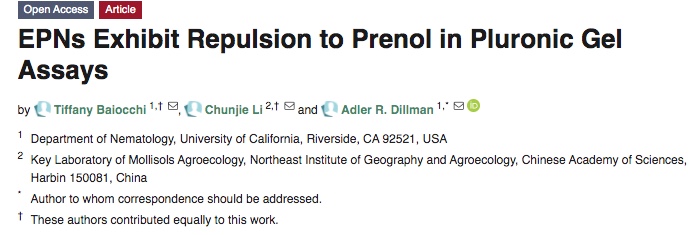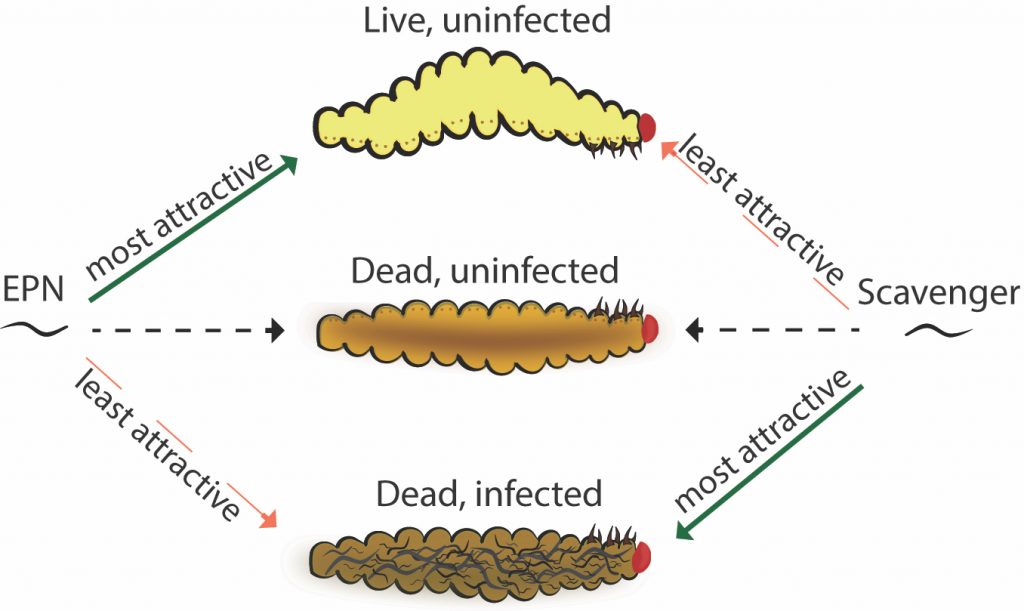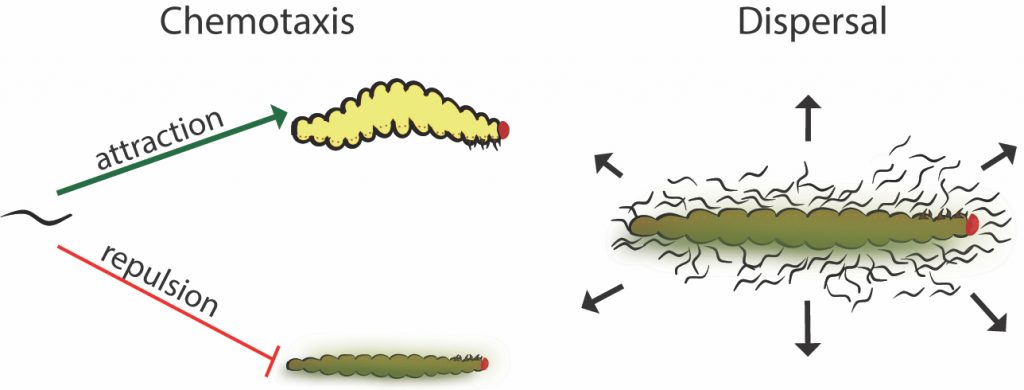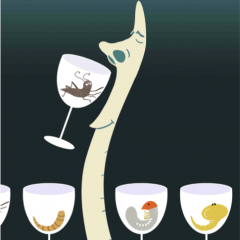 Dr. Tiffany Baiocchi, a former graduate student that is now an assistant professor at Lassen County Community College, just published the final chapter of her doctoral thesis in GENETICS. The new paper represents a Herculean effort by Tiffany and many of the undergraduates she trained. Six of her trainees share authorship on the paper. Paul Sternberg and members of his lab at Caltech were also instrumental in completing essential experiments for this project. This project was a follow-up on Tiffany’s previous work identifying prenol as an odor associated with EPN-infected insects. Her latest paper explores the neurons and genetic pathways involved in the detection and response to prenol by C. elegans. Congratulations Tiffany and all those involved!
Dr. Tiffany Baiocchi, a former graduate student that is now an assistant professor at Lassen County Community College, just published the final chapter of her doctoral thesis in GENETICS. The new paper represents a Herculean effort by Tiffany and many of the undergraduates she trained. Six of her trainees share authorship on the paper. Paul Sternberg and members of his lab at Caltech were also instrumental in completing essential experiments for this project. This project was a follow-up on Tiffany’s previous work identifying prenol as an odor associated with EPN-infected insects. Her latest paper explores the neurons and genetic pathways involved in the detection and response to prenol by C. elegans. Congratulations Tiffany and all those involved!
Tag: Tiffany Baiocchi
EPN Behavior in Pluronic Gel
Efforts in studying EPN behavior over the last 60 years have primarily relied on assays done in sand, soil or agar. Pluronic gel (PF127) media, which has been used to study other nematodes, has only recently been employed to study EPN behavior. In collaboration with Chunjie Li from the Chinese Academy of Sciences, we explored the value of using pluronic gel as a means of studying EPN behavior.
Differentiating between scavengers and entomopathogenic nematodes

Entomopathogenic nematodes (EPNs) are a special guild of insect-parasitic nematodes. What sets them apart from other insect-parasitic nematodes are their ability to rapidly kill their host, and their use of bacteria to facilitate their lifestyle. There are an increasing number of species descriptions that include new species of EPNs, even when the newly described species is not in fact an EPN. A recent study on how to differentiate between EPNs and scavengers was recently published. This work was done by Tiffany Baiocchi, Dennis Chang, and Dihong Lu, in collaboration with visiting scholar Keyun Zhang. Congratulations to the authors, this is a nice study that should prove useful to researchers describing new insect-associated nematodes.
Paper on EPN Response to Prenol Published

A study done by recent graduates Kassandra Kin and Dr. Tiffany Baiocchi was recently published in Biology. The study investigates the behavioral response of several entomopathogenic nematodes to the odor prenol, which is associated with nematode-infected insects. Since performing this work these scientists have moved on in their careers:
After graduating from UCR in June of 2019 Kassandra has accepted a position at NYU’s Stienhardt Teacher Residency program. Tiffany graduated with her Ph.D. in June of 2019 and is currently working as a postdoctoral fellow at Cal State Northridge in the Hong Lab.
Tiffany Baiocchi Awarded Outstanding Student Award
Congratulations to Dr. Tiffany Baoicchi!! The Nathan A. Cobb Foundation and the Society of Nematologists awards Tiffany Baiocchi the John M. Webster Outstanding Student Award for 2019. This is the highest award given to a PhD student by the the Society of Nematologists.

Tiffany & Dennis Graduate!
Dennis Chang and Tiffany Baiocchi walked and were hooded at UCR’s graduation this summer. They are the first graduate students trained in the Dillman Lab to earn a Ph.D. Dennis will defend his thesis later this year. Tiffany will begin her postdoctoral research in the Hong lab at Cal State Northridge later this summer. Congratulations!
Tiffany Baiocchi defends her thesis

Tiffany Baiocchi, a graduate student in Biochemistry & Molecular Biology, and the first graduate student to officially join the Dillman lab is defending her thesis on Wednesday, May 29th at 1pm in the Genomics auditorium. We invite all to attend and support Tiffany on this momentous occasion.

